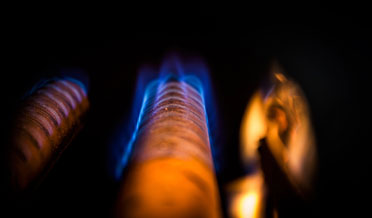Furnace Replacement: 6 Key Signs You Need a New System
“Anything that can go wrong will go wrong.” This is lovingly referred to as Murphy’s Law, named after Edward Aloysius Murphy, an American aerospace engineer. Yikes!!
There is an interesting corollary to Murphy’s law as it relates to furnace failure; “anything that can go wrong will go wrong at the worst possible time.” Extreme temperatures—when the furnace (or air conditioner) is needed most—create stress on the vital parts. Weakened parts generally fail under stress, leaving a family in the cold.
Don’t get caught in the cold! Do a little research to discover the state of your current system and how soon you need a furnace replacement.
Determine the System’s Age.
Central heating and air conditioning (HVAC) systems became a common part of single-family homes in the 1960s. After 60+ years of experience, research is abundantly clear that HVAC systems last about 20 years; regular maintenance can add several years of service to this average. How old is your system?
If the system was installed before you moved in, check the serial number plate on the furnace. The manufacturer’s website will help a homeowner determine the system’s age. Use this information to form a furnace replacement plan; if you have a few years, adjust the budget to plan for furnace replacement.
Measure Comfort.
An older system that is losing efficiency may result in uneven heat, leaving cold spots in certain spaces. The same spaces are most likely hot during the summer. Make sure that vents are uncovered, and the air filter is changed on schedule (at least every three months). Since the family is dependent on the system for comfort year-round, don’t delay your furnace replacement if it can be helped.
Don’t Ignore Rust.
Water vapor is a product of combustion of natural gas or propane. If water vapor causes rust and corrosion on the burner assembly, it can result in a fire hazard. If water vapor causes rust and corrosion in the heat exchanger, it will allow carbon monoxide to leak into the home, creating an asphyxiation hazard. A severely compromised system may need to be replaced.
Use Your Senses: Sounds.
Unusual sounds in an automobile generally indicate a problem has developed. The same is true for HVAC systems. A grinding or screeching noise usually indicates a problem with the blower motor, since this is the only moving part in the entire system. The grinding noise will not last long before the blower motor fails.
The ductwork is made of thin sheet metal. It is not unusual to hear a minor popping noise as the metal expands and contracts during a heating/cooling cycle. If this noise gets louder or becomes rhythmic, this may indicate a problem in the ductwork developing.
A light buzzing or electrical hum is not unusual, but when the sound increases in volume, it indicates a part is weak and under stress. This might be a small problem, or it might be a larger problem in development.
If your home has a natural gas or propane furnace it should also have a Carbon Monoxide Monitor. Do not ignore a CO monitor warning. Make sure to keep the batteries changed annually. CO monitor alarms indicate that dangerous gases are leaking into the home.
Use Your Senses: Smells.
It is not unusual to smell the dust burning away on the first heating cycle, but beyond that initial smell, the HVAC system should not be adding any odors to the home. Musty or burnt smells are not normal; have them checked immediately.
Add the Bills.
An increase in utility bills that corresponds to a heating or cooling cycle might indicate an increase in energy cost. An increase in the number of kilowatt hours used during these seasons might indicate the energy inefficiency of an HVAC system.
Keep a running total of the repairs needed to keep an existing system going. Request a quote for a new system from your HVAC contractor. A comparison of the two figures will help you determine when it is time to replace your system.
Furnace Replacement: Don’t Get Caught in the Cold!
When you need furnace replacement, come to the name the Texas Gulf Coast trusts, Doctor Cool & Professor Heat. As an award-winning, BBB-accredited Furnace Replacement and HVAC installation contractor serving the League City and surrounding area, we pride ourselves in providing exceptional service to our customers. Call Doctor Cool & Professor Heat today at 281-338-8751 or email Doctor Cool.

